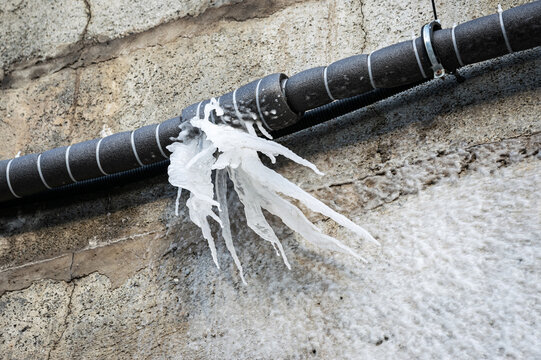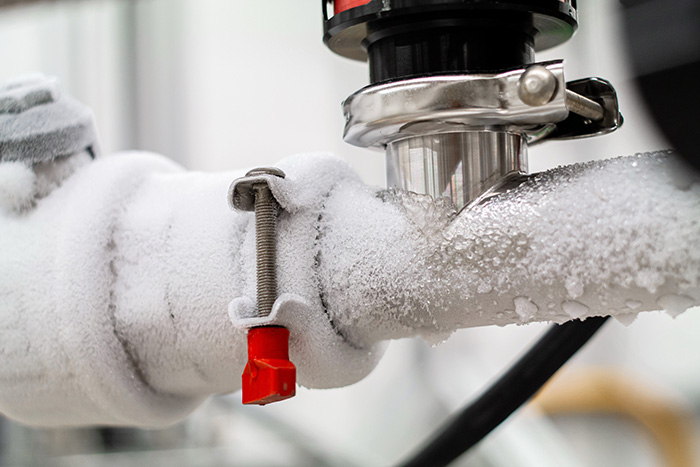We have encountered this article relating to Prevent Frozen Pipes down the page on the internet and think it made perfect sense to share it with you on this site.

Cold weather can wreak havoc on your pipes, specifically by freezing pipes. Here's exactly how to stop it from occurring and what to do if it does.
Introduction
As temperature levels drop, the threat of icy pipes increases, potentially resulting in pricey repair work and water damage. Recognizing how to stop icy pipes is crucial for property owners in cool environments.
Understanding Frozen Pipelines
What creates pipelines to freeze?
Pipes freeze when revealed to temperatures below 32 ° F (0 ° C) for expanded durations. As water inside the pipes freezes, it expands, putting pressure on the pipe walls and potentially causing them to burst.
Risks and problems
Icy pipes can result in water system interruptions, building damages, and costly repair work. Burst pipelines can flooding homes and trigger comprehensive structural damages.
Indications of Frozen Pipeline
Recognizing icy pipes early can stop them from rupturing.
Exactly how to identify icy pipes
Seek reduced water circulation from faucets, uncommon odors or sounds from pipelines, and noticeable frost on exposed pipelines.
Avoidance Tips
Protecting at risk pipes
Wrap pipelines in insulation sleeves or use heat tape to protect them from freezing temperatures. Concentrate on pipes in unheated or exterior areas of the home.
Home heating methods
Keep interior spaces effectively heated, specifically areas with plumbing. Open cabinet doors to enable warm air to distribute around pipes under sinks.
Securing Exterior Pipes
Yard pipes and exterior taps
Detach and drain garden tubes prior to wintertime. Set up frost-proof spigots or cover outdoor taps with shielded caps.
What to Do If Your Pipelines Freeze
Immediate actions to take
If you suspect frozen pipes, maintain taps open to alleviate stress as the ice thaws. Use a hairdryer or towels taken in hot water to thaw pipes gradually.
Long-Term Solutions
Structural changes
Consider rerouting pipes far from outside wall surfaces or unheated areas. Add additional insulation to attic rooms, cellars, and crawl spaces.
Updating insulation
Purchase high-quality insulation for pipes, attics, and wall surfaces. Correct insulation aids keep consistent temperatures and reduces the risk of frozen pipelines.
Final thought
Protecting against icy pipelines needs positive steps and quick reactions. By understanding the reasons, signs, and preventive measures, homeowners can shield their pipes during winter.
5 Ways to Prevent Frozen Pipes
Drain Outdoor Faucets and Disconnect Hoses
First, close the shut-off valve that controls the flow of water in the pipe to your outdoor faucet. Then, head outside to disconnect and drain your hose and open the outdoor faucet to allow the water to completely drain out of the line. Turn off the faucet when done. Finally, head back to the shut-off valve and drain the remaining water inside the pipe into a bucket or container. Additionally, if you have a home irrigation system, you should consider hiring an expert to clear the system of water each year.
Insulate Pipes
One of the best and most cost-effective methods for preventing frozen water pipes is to wrap your pipes with insulation. This is especially important for areas in your home that aren’t exposed to heat, such as an attic. We suggest using foam sleeves, which can typically be found at your local hardware store.
Keep Heat Running at 65
Your pipes are located inside your walls, and the temperature there is much colder than the rest of the house. To prevent your pipes from freezing, The Insurance Information Institute suggests that you keep your home heated to at least 65 degrees, even when traveling. You may want to invest in smart devices that can keep an eye on the temperature in your home while you’re away.
Leave Water Dripping
Moving water — even a small trickle — can prevent ice from forming inside your pipes. When freezing temps are imminent, start a drip of water from all faucets that serve exposed pipes. Leaving a few faucets running will also help relieve pressure inside the pipes and help prevent a rupture if the water inside freezes.
Open Cupboard Doors
Warm your kitchen and bathroom pipes by opening cupboards and vanities. You should also leave your interior doors ajar to help warm air circulate evenly throughout your home.

I came across that entry on Helpful Tips to Prevent Frozen Pipes this Winter when looking around the web. Do you know somebody else who is fascinated by the subject? Feel free to promote it. I appreciate reading our article about 6 Ways to Prevent Frozen Pipes.
Book 24/7
Comments on “Preventing Pipes from Cold Weather: Best Tips”